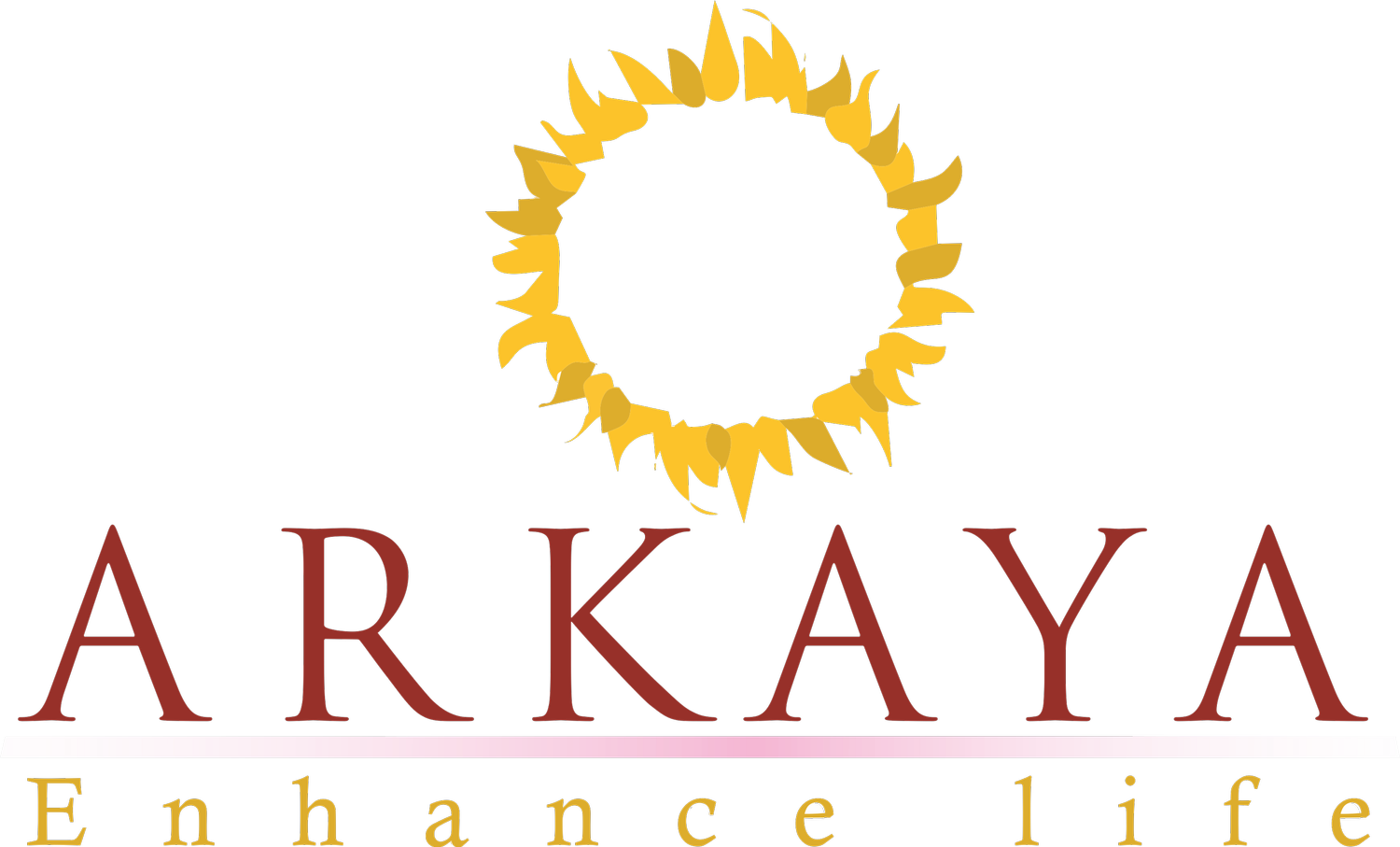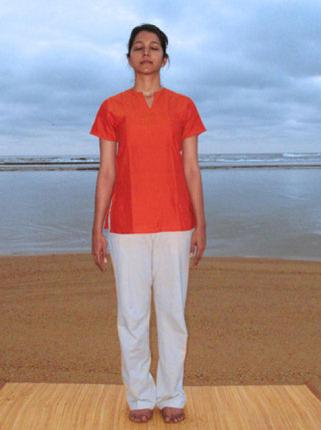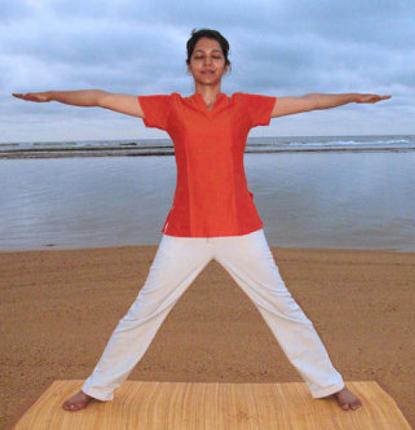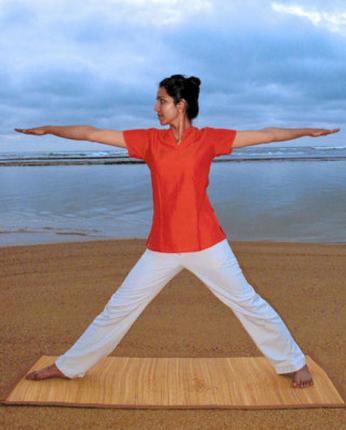Practical mystic and yoga guru Yogacharini Maitreyi tells you how yoga can help you face life and yourself.
Spirituality or the yoga life is not for the weak. It is a path that makes us face life and ourselves. All Yoga practices and principles are geared to do exactly that. They make our bodies, emotions and mind fit to face the day. We also see we have choices as to how to face situations.
THE WARRIOR OF LIGHT
In the science of Indian symbols and archetypes, we have Karthikeya or Muruga who is looked at as a warrior of light. He is one who stands up for what he believes in. There are archangels like Michael in the Christian cultures who symbolise this strength and protection.
Warriors or those symbolising this energy are usually depicted as youthful and full of life. Hence we must cultivate prana or energy through the practices to have this life force in us. This life force or prana is used to address, accept and befriend our own inner enemies.
Acceptance takes courage: We need to face the dissatisfaction we are facing. Many try to fight it but the best is to first accept situations as they are. Then the dissatisfaction melts. One can then choose how to shift or improve the situation.
Forgiveness takes courage: When we are flogging ourselves or another repeatedly for mistakes we are just beating a dead horse. One may as well punch a pillow and get all that repressed energy out. It takes courage to be compassionate.
If flogging can be replaced with forgiveness it is a good way to save energy and move on. Else we remain stuck in the mistake rather than the possibility to rectify the mistake. Letting go takes courage. It creates space for newer and better possibilities.
To accept one's human-ness takes courage: When one is on the spiritual path I see the greatest pitfall amongst the very sincere seekers is to want to save the world in an imbalanced way. In the bargain one may end up with many wounds fighting everyone else's war if one is not discerning.
The spiritual path does mean we are not engaged in the world or engaged with people. However it also takes courage and discernment to know when to step back and not be part of every fight one is called to support.
One needs to accept one's humanness and not think of one as superman. Yes, we have the potential to influence others for the positive; we have the capacity for super-humaness. Yet one must acknowledge that one is human and not negate one's vulnerability.
It takes courage to accept one's frailties. Then one will have the energy to stand up for what is right when it is not us but another who is wronged.
THE FLIGHT OR FIGHT RESPONSE
The stress response is also called the flight or fight response. It is the survival mechanism wired into our systems that helps us detect threat and act to save our lives. This protected us in the jungle from wild animals.
However today's stresses are virtual and there is no actual immediate threat to our lives like a lion coming to devour us. It is in the future or imagined. Our minds create more stresses than there actually are. Yet it eats into our systems and drains us of prana or energy making us week in the knees. Hence it helps to give these virtual stresses a rest by regularly practising the yogic conscious movements and pranayamas
Even the best warrior needs to retreat: One needs to retreat from the stresses and greed-filled world to keep one's balance. Do not confuse retreating with running away. Every day keep some quiet time to your self. Also if you can fit in a yearly retreat where you can re-orient yourself to a more balanced life it will bring in tremendous benefits.
Sometimes we get so addicted to the buzz of things that we see what we are missing only when we adopt a quiet life. Else our entire lives get drowned in the buzz of things and people.
The verses below reflect those thoughts:
To retreat is not to run away:/Even the best warrior cannot be at war/every single day./One need not always be put to the test./So find time to recuperate and rest/If you can at least save/Two to three minutes every hour/And two to three weeks every year/You will strengthen and integrate/If you can also find time each day/In the morning, afternoon and night/For quiet time, contemplation as well as play/You may then find that there is no time to fight.
Veerya Asana
Veerya means courage. By practicing the veerya asana one can cultivate inner resolve. When you see someone who is brave you see that their body language communicates that. Their shoulders are relaxed, chest open and there is a strong sense of being.
This inner strength to face life and ourselves as we evolve can be cultivated by practicing this asana. When we think of a brave person we normally associate it with a warrior, someone whom we can actually see fighting. However the yogic perspective to courage is not only one who can fight but one who can choose not to fight. That takes courage as well to stand by one’s convictions. One can stand up for what is right without being cowed down, yet not fight.
This inner conviction and strength is not just an intellectual concept but something in our blood and bones. The courage to stand up for what is right runs through our system when we practice this asana. Then we are not afraid to be with and to face our pain. We don’t have to run away from it, only retreat, be with it and dissolve it.
The technique
Stand in samasthithi asana and breathe in the fresh air. Enjoy the balance and enjoy your breath. Samasthithi means balance or equipoise.
Now step wide apart, till you comfortably can and spread your arms out. Check to see that the arms are in line with each other and straight. Get a sense you are going to reach for the wall on either side by stretching/extending your arms. Feel the elongation from your shoulder joint.
Now move your head to the right and turn your right foot
Now sit down keeping torso straight without leaning too forward. Also check to see that the bent knee does not extend beyond the ankle. Ideally it is in line with the ankle. It is fine if it is slightly behind rather than forward, as that puts undue pressure on the knee. Be in the posture for as long as possible breathing in and out as you hold the position. Repeat turning to the left and holding the position looking to the left. Do it as per your body condition and do not force. You can do this three times.
You may also place a chair that does not have any side handles below the bent leg for support. However I would recommend that instead of using props you strengthen your system using the simple yet effective jathis (conscious movements), kriyas, pranayamas and yogic diet and then try the asana. There is no rush or hurry, so don’t worry. Do the simple practices step by step every day and then you will be easily able to do the asanas that may seem difficult in the beginning.




